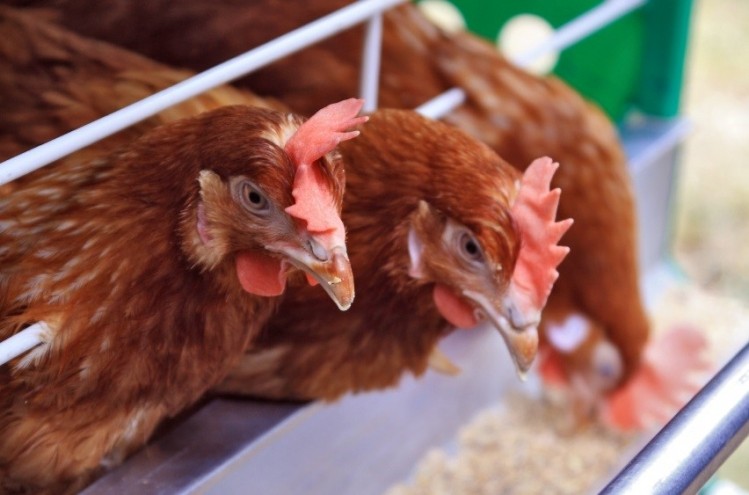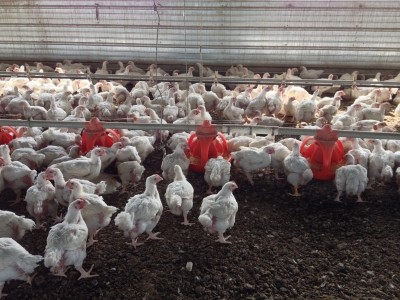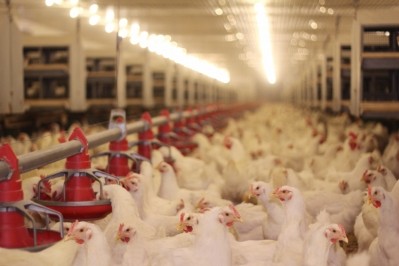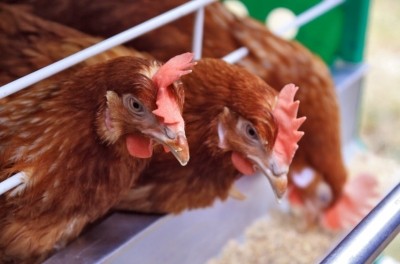Aged laying hens may see production, health boost from MOS supplement

A team of researchers in Iran reported finding on their work with MOS in the journal of Animal Feed Science and Technology.
The work sought to examine the use of MOS supplements on older hens, said researchers. “The present study was conducted to investigate the influence of supplemental MOS on performance, blood lipid metabolites, antibody responses, and ileal microflora in Leghorn laying hens during late egg production,” they added.
“Dietary MOS supplementation at the levels of 1 and 1.5 g/kg increased egg production performance and feed efficiency in aged laying hens,” they said. “This improved performance could be largely attributed to the increased ileal nutrient digestibility and reduced pathogenic intestinal bacteria, as microbiological data showed that supplemental MOS decreased ileal population of Salmonella.”
Why MOS supplements?
The poultry industry is seeking replacements for antibiotics in bird production, said researchers. “Mannan-oligosaccharides (MOS), predominantly originated from yeast cell wall, are among the best alternatives for antibiotic compounds in poultry feeds (Ferket et al., 2002), referred as the non-pharmaceutical alternatives to antibiotics,” they added.
The supplement may prevent bacteria from taking hold in a bird’s intestinal tract, they said.
Additionally, previous testing has shown a boost to weight gain, feed conversion efficiency and digestibility in broilers and turkeys, they said. However, results have not been as positive when used in layer feed.
The researchers sought to answer questions about the mode of action involved in MOS use and to address the previous contradictory results found in the supplement’s use in poultry, they said.
Experiment details
In the experiment, researchers fed 150 hens 68 weeks of age, one of five experimental diets, said the scientists. After a week of adaption, hens were given the new diet for 70 days.
The diets included a basal feed comprised mainly of corn, soybean meal and wheat bran and that diet with 0.5, 1, 1.5 and 2 g/kg of added MOS, they said. The MOS they used was ActiveMOS from Biorigin.
Eggs were collected and weighed daily, and hen weights were taken at the start and end of the experiment, they said. Feed residue was measured at the end of 35-day periods to calculate average daily feed intake (ADFI).
Birds were vaccinated against Newcastle (NDV) and infectious bronchitis (IBV) at day 36 and samples for an antibody assay were collected on days 7 and 14 post-vaccination, said the researchers. Blood samples were collected on day 69.
An acid insoluble ash market was used to test ileal nutrient digestibility, they said. Two birds in each group were killed to collect ileal contents and digesta.
Results
Hens demonstrated a response to diets including at least 1 g/kg of the MOS or more, said researchers. “The present findings indicate that dietary MOS supplementation, particularly at the levels of 1 and 1.5 g/kg, could increase production performance and feed conversion efficiency in aged laying hens,” they added.
“Dietary supplementation with 1 g/kg of MOS increased (P < 0.05) egg weight during the first 35-d period,” they said. “In addition, dietary inclusion of 1.5 g/kg of MOS into the diet increased (P < 0.05) hen-day egg production and egg mass compared to the control hens.”
Birds getting 1.5 g/kg MOS had the best feed efficiency for the first half of the study, and those getting 1 g/kg had it for the second part, they said.
When compared to the control birds, those hens getting from 1 to 2 g/kg in their diets saw a boost in their serum high-density lipoproteins as well as lower serum concentrations of triglycerides and low-density lipoproteins, they said. The hens also had more antibody production.
“Inclusion of MOS into the diets increased digestibility coefficients of crude protein (P < 0.01) and dry matter (P < 0.05),” they said.
Control birds had the highest ileal population of salmonella, said researchers. Hens getting 1 g/kg of the MOS supplement saw a reduction in Escherichia coli and an increase in the amount of Lactobacillus.
“Supplemental MOS levels of 1 and 2 g/kg increased (P < 0.05) IBV antibody titer at d 14 post vaccine inoculation compared to the control birds,” they said. “In contrast to NDV and IBV titers, MOS supplementation (0.5 and 1 g/kg of diet) increased (P < 0.05) SRBC antibody response during the primary response.”
There were no marked differences in body weight change or average daily feed intake, they said.
Source: Animal Feed Science and Technology
Title: Dietary mannan-oligosaccharides supplementation could affect performance, immunocompetence, serum lipid metabolites, intestinal bacterial populations, and ileal nutrient digestibility in aged laying hens
DOI: 10.1016/j.anifeedsci.2015.12.012
Authors: M. Ghasemian, R. Jahaniana,















